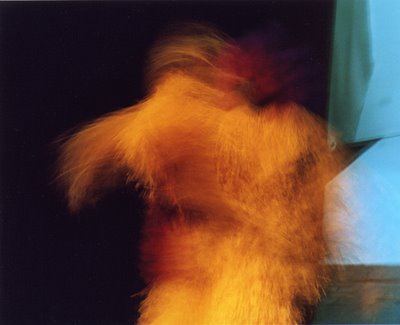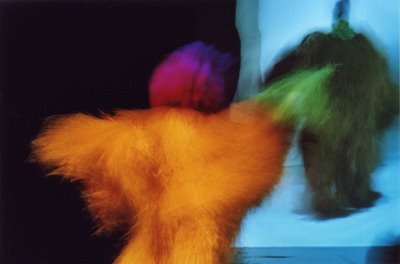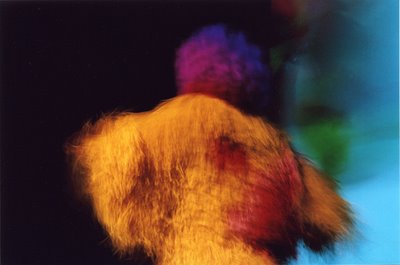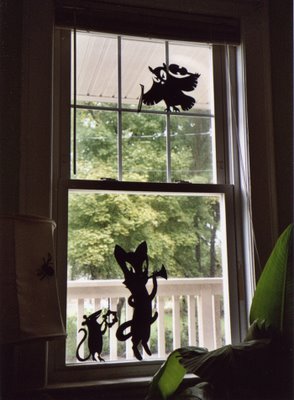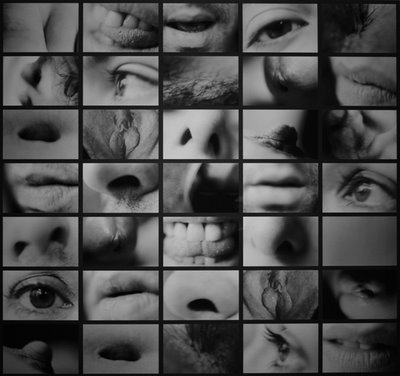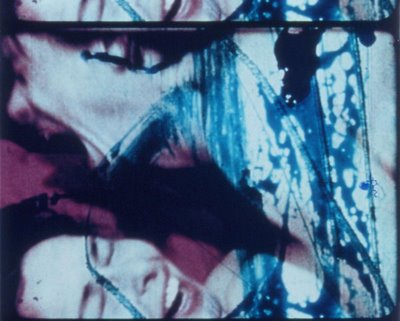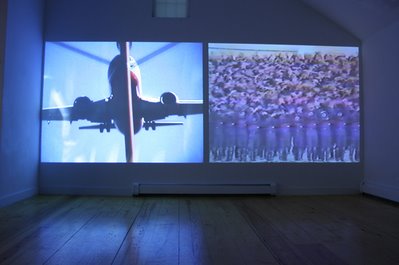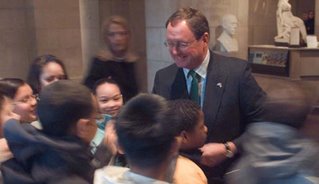New BCA curator
Jose Luis Blondet, the new visual arts curator at the Boston Center for the Arts, began work on Sept. 17 with a mandate to focus on local art and increase the institution’s community outreach. The 38-year-old arrives from the minimalist art mecca Dia: Beacon, where he says he lead the museum’s education and outreach programming since just after it opened in 2003 in a renovated factory about an hour’s drive north of New York City.
“I was really looking to work at a smaller space,” Blondet says, “where I could have more input in curatorial decisions.”
He replaces Laura Donaldson, who left in August, pushed out by the BCA after serving as director of the BCA’s Mills Gallery since 2003.
BCA exhibitions had already been booked through July 2008 before Blondet arrived.
The main thrust of Blondet's plans would maintain the gallery’s status quo. Blondet expects to curate two shows each year, augmented by two or three guest curated shows. He plans to organize separate exhibitions in the tiny project room off the Mills Gallery’s main room and video presentations in the back room of the gallery.
New programming could include some visual art exhibitions in the BCA’s cyclorama (“It’s a wonderful space and it was built to house art,” Blondet says) and on the plaza in front of BCA buildings. Wendy Baring-Gould, the BCA’s director of arts and community programming, says Blondet will also be involved in programming art for the lobby of the BCA’s artists’ studio building and the theater lobby, and give input on visual art displayed in the Beehive, a restaurant, bar and performance venue that opened at the BCA in May.
“It’s an expanded role in that it’s looking at visual arts programming across the campus,” Baring-Gould says.
Still, the Mills Gallery will remain the primary focus of the BCA’s visual arts programming. The cyclorama is already often booked and the Beehive is leased out to independent operators, so it’s unclear how much additional visual arts programming will happen there.
“The BCA is very committed to celebrating local artists," Blondet says. "I think a very interesting idea to me would be to explore what does it mean to be local.” His initial thoughts include examining what art is blossoming around Boston and comparing it to what kind of local art is blossoming elsewhere, perhaps in particular Philadelphia. “To me the Boston scene kind of reminds me of Philadelphia,” he says.
“I’ve been looking at movies, novels and stories that take place in Boston,” Blondet adds. “In terms of thinking of Boston, it would be interesting to find examples where Boston is a fictive place, where Boston is a stage for things to happen. … To find clues in the representation of the city to see if that has something to do with that idea of being local.”
Blondet hopes to build partnerships between Boston’s art scene and its colleges and universities. He perceives a “disconnection between the [Boston] academic world and the rest of the city. … They have no impact in the local [art] scene.” Baring-Gould hopes Blondet will also be able to set up an internship program here similar to the one he ran at Dia: Beacon in which students from Columbia University, the State University of New York, Vassar College and Bard College became Dia docents.
Rumors began circulating early this year that Laura Donaldson was being pushed out by the BCA. Then in May the BCA began advertising for the newly created position of “visual arts manager.” In June, the institution said a restructuring would “result in the elimination of the position of Mills Gallery Director,” Donaldson’s job.
Blondet, however, was named “curator” and the programming he’ll oversee sounds to some to be quite similar to what Donaldson had done. So speculation arose that the new “visual arts manager” position had been a ruse to push out Donaldson.
“The title changed, but the job description remained the same,” Baring-Gould says. The BCA, she says, was always looking for curatorial experience and expertise, experience and interest in public programming, and a commitment to reach out to new audiences. She says the title became curator because that’s what Blondet preferred.
“Donaldson absolutely professionalized the gallery,” Baring-Gould says. But she says all BCA programming has been examined and restructured over the past two to three years. Out of that, she says, the BCA wanted to bring in someone new to lead its visual arts programming, particularly someone who would focus more on public programming and outreach. Blondet’s background in community outreach – to schools and locals around Beacon, as well as New York City art mavens – particularly interested BCA leaders.
Baring-Gould says the BCA tried to do good by Donaldson, giving her six months notice, a severance package and inviting her to guest curate two exhibitions. “Organizations need to do what they need to do,” Baring-Gould says. She hopes Donaldson will excel elsewhere. “We hope it's all for the best for everybody,” she says. “And we’re delighted to have him.”
Blondet, who now resides in Boston's South End, says he grew up in Caracas, Venezuela, studied literature, taught comparative literature at the National University at Caracas and was director of the education department at the Museum of Fine Arts in Caracas. He got a fellowship from the Cisneros Art Foundation to study at Bard College. He then knew no English, so he spent three weeks in Boston before going to Bard, where he received a master's degree in 2003 from the school’s curatorial studies program. His thesis advisor was Dia curator Lynne Cook, a connection that helped lead to his job as administrator of education programs at Dia: Beacon.
“I was really looking to work at a smaller space,” Blondet says, “where I could have more input in curatorial decisions.”
He replaces Laura Donaldson, who left in August, pushed out by the BCA after serving as director of the BCA’s Mills Gallery since 2003.
BCA exhibitions had already been booked through July 2008 before Blondet arrived.
The main thrust of Blondet's plans would maintain the gallery’s status quo. Blondet expects to curate two shows each year, augmented by two or three guest curated shows. He plans to organize separate exhibitions in the tiny project room off the Mills Gallery’s main room and video presentations in the back room of the gallery.
New programming could include some visual art exhibitions in the BCA’s cyclorama (“It’s a wonderful space and it was built to house art,” Blondet says) and on the plaza in front of BCA buildings. Wendy Baring-Gould, the BCA’s director of arts and community programming, says Blondet will also be involved in programming art for the lobby of the BCA’s artists’ studio building and the theater lobby, and give input on visual art displayed in the Beehive, a restaurant, bar and performance venue that opened at the BCA in May.
“It’s an expanded role in that it’s looking at visual arts programming across the campus,” Baring-Gould says.
Still, the Mills Gallery will remain the primary focus of the BCA’s visual arts programming. The cyclorama is already often booked and the Beehive is leased out to independent operators, so it’s unclear how much additional visual arts programming will happen there.
“The BCA is very committed to celebrating local artists," Blondet says. "I think a very interesting idea to me would be to explore what does it mean to be local.” His initial thoughts include examining what art is blossoming around Boston and comparing it to what kind of local art is blossoming elsewhere, perhaps in particular Philadelphia. “To me the Boston scene kind of reminds me of Philadelphia,” he says.
“I’ve been looking at movies, novels and stories that take place in Boston,” Blondet adds. “In terms of thinking of Boston, it would be interesting to find examples where Boston is a fictive place, where Boston is a stage for things to happen. … To find clues in the representation of the city to see if that has something to do with that idea of being local.”
Blondet hopes to build partnerships between Boston’s art scene and its colleges and universities. He perceives a “disconnection between the [Boston] academic world and the rest of the city. … They have no impact in the local [art] scene.” Baring-Gould hopes Blondet will also be able to set up an internship program here similar to the one he ran at Dia: Beacon in which students from Columbia University, the State University of New York, Vassar College and Bard College became Dia docents.
Rumors began circulating early this year that Laura Donaldson was being pushed out by the BCA. Then in May the BCA began advertising for the newly created position of “visual arts manager.” In June, the institution said a restructuring would “result in the elimination of the position of Mills Gallery Director,” Donaldson’s job.
Blondet, however, was named “curator” and the programming he’ll oversee sounds to some to be quite similar to what Donaldson had done. So speculation arose that the new “visual arts manager” position had been a ruse to push out Donaldson.
“The title changed, but the job description remained the same,” Baring-Gould says. The BCA, she says, was always looking for curatorial experience and expertise, experience and interest in public programming, and a commitment to reach out to new audiences. She says the title became curator because that’s what Blondet preferred.
“Donaldson absolutely professionalized the gallery,” Baring-Gould says. But she says all BCA programming has been examined and restructured over the past two to three years. Out of that, she says, the BCA wanted to bring in someone new to lead its visual arts programming, particularly someone who would focus more on public programming and outreach. Blondet’s background in community outreach – to schools and locals around Beacon, as well as New York City art mavens – particularly interested BCA leaders.
Baring-Gould says the BCA tried to do good by Donaldson, giving her six months notice, a severance package and inviting her to guest curate two exhibitions. “Organizations need to do what they need to do,” Baring-Gould says. She hopes Donaldson will excel elsewhere. “We hope it's all for the best for everybody,” she says. “And we’re delighted to have him.”
Blondet, who now resides in Boston's South End, says he grew up in Caracas, Venezuela, studied literature, taught comparative literature at the National University at Caracas and was director of the education department at the Museum of Fine Arts in Caracas. He got a fellowship from the Cisneros Art Foundation to study at Bard College. He then knew no English, so he spent three weeks in Boston before going to Bard, where he received a master's degree in 2003 from the school’s curatorial studies program. His thesis advisor was Dia curator Lynne Cook, a connection that helped lead to his job as administrator of education programs at Dia: Beacon.





